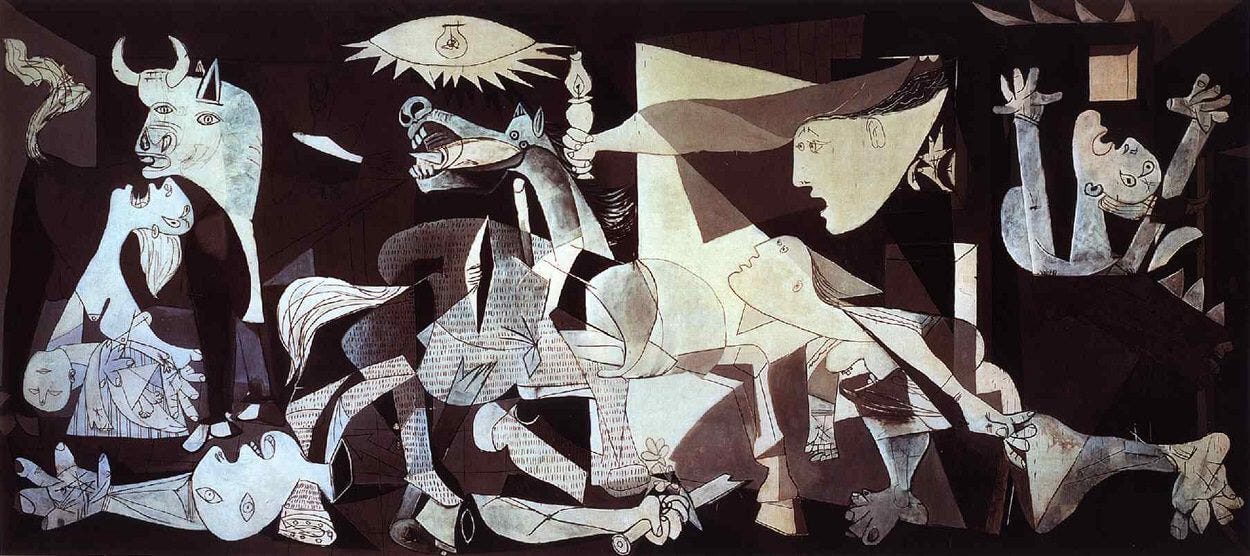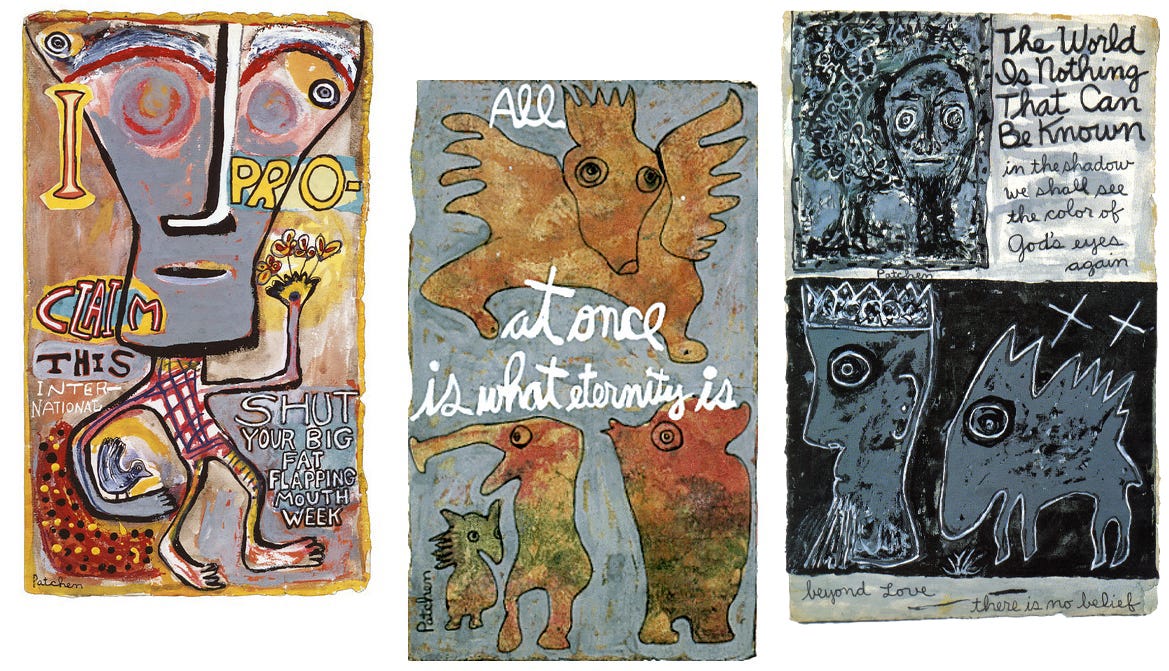Kenneth Patchen the Pacifist Rebel Poet
Influencer of San Francisco beat poets and writers, among others
Kenneth Patchen (December 13, 1911 – January 8, 1972) was a poet, novelist, artist, performer, pacifist, and visionary who, in the words of biographer Larry Smith, was the "Rebel Poet of America." Originally from Ohio, Patchen spent his later years in Palo Alto.
His romance with writing began at age twelve when he started keeping a diary and reading the works of famous writers. His first published work was in his Ohio high school newspaper. After attending Alexander Meiklejohn's Experimental College for one year and then the University of Wisconsin, he grew bored with his studies and began to wander around the US. He continued his writing, and in 1934, he married Miriam Oikemus.
During the Great Depression, Kenneth and his wife Miriam traveled between Greenwich Village, New York City and North Beach, San Francisco, as Kenneth began to establish himself as a writer while struggling to make ends meet. In 1946, Henry Miller wrote an essay on Patchen, “Patchen: Man of Anger and Light,” which characterized him as a true original who was like a genre of his own, not accepted by the literary establishment. Miller compared him to the likes of William Blake, Lautreamont, Picasso, Bosch, and John the Revelator.
Let Us Have Madness
Let us have madness openly.
O men Of my generation.
Let us follow
The footsteps of this slaughtered age:
See it trail across Time's dim land
Into the closed house of eternity
With the noise that dying has,
With the face that dead things wear—
nor ever say
We wanted more; we looked to find
An open door, an utter deed of love,
Transforming day's evil darkness;
but We found extended hell and fog Upon the earth,
and within the head
A rotting bog of lean huge graves.
©1958
Following World War II, the Patchens settled in Connecticut, but then after becoming close friends with the poet Kenneth Rexroth, they relocated to San Francisco in 1951. Patchen entered a vibrant “San Francisco Renaissance” literary scene in North Beach, which was established years before the arrival of the beats, and included his friend Kenneth Rexroth, along with Philip Lamantia and William Everson, among others.
Patchen’s work directly influenced the up-and-coming beat poets, including Lawrence Ferlinghetti (who would publish some of Patchen’s work on his City Lights imprint), Michael McClure, Gary Snyder, Allen Ginsberg, and Peter Orlovsky. As early as the late 1940s, Patchen was performing his poetry to jazz accompaniment, and he inspired Bay Area poets to do likewise. Years later, writer Richard Brautigan and rock star Jim Morrison credited the man for his influence on them.
Sure There Is Food…
The trick is to get truth and lies
To sound just the same
That way you’ve got it made
Everybody is mad after while
Then you can come up with a world
Where madness is the normal thing
Of course those who rig it that way
End up mad themselves
But—who’s to know the difference?
This world’s the best example I know.
©1946
One of Kenneth Patchen’s later innovations was what he called the “painting-and-poem form,” which combined his untrained but impactful visual artistic skills with words to create hybrid works of surprisingly powerful impact. He created these celebrated painted poems partly out of necessity due to chronic pain and sometimes debilitating health issues.
While working on a friend’s car in 1937, the vehicle fell on top of him, severely damaging his spine. He never fully recovered, and over the years, his condition was worsened by botched surgeries.
By 1957, Patchen was a semi-invalid, spending most of his final 12 years a recluse, with his beloved wife Miriam (to whom he dedicated every one of his 40 books), in their Palo Alto home at 2340 Sierra Court.
His only creative outlet during these bedridden years was his painted poems. He completed 151 of them using a variety of materials like Japanese paper, tempera, and watercolors. Patchen also produced over a thousand "painted books," special copies of his books with original paintings on the covers.
After Kenneth's passing in 1972, Miriam was as an advocate for her husband's poetry and became an activist for peace - holding weekly demonstrations against war (for 15 years) in Palo Alto.
Laurent B. Frantz, a civil rights activist and constitutional scholar, became her companion until he died on September 20, 1998. In 1998, Miriam was the subject of an award-winning short documentary film by Kim Roberts titled Miriam Is Not Amused.
She passed in March 2000 in her Palo Alto home, apparently while reading a peace pamphlet.


⭐⭐⭐⭐⭐ "I am an avid reader of mob and true crime novels. This is one of the best I have ever read." - Amazon review
⭐⭐⭐⭐⭐ "What a page turner! This story is an amazing piece of investigative work—both compelling and heartbreaking." - Amazon review
⭐⭐⭐⭐⭐ “I’d seen the author’s work in OZY but was blown away by this book. It’s SUCH a great read, written from the heart! Full of interest for those historians of the hippie generation, North Beach, corrupt cops, mobbed up pols, and San Francisco in general. Very well written and paced up to the last pages. Truth is indeed stranger than fiction. Buy this book now!" - Amazon review







